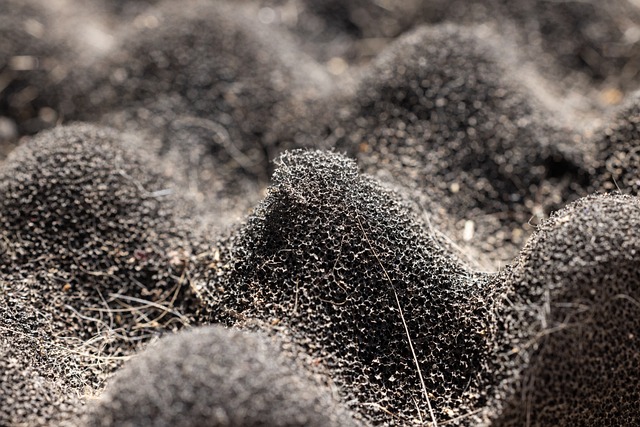DIY pipe insulation offers homeowners an affordable, effective way to protect outdoor plumbing from freezing temperatures, maintain water supply integrity, and reduce energy costs. Using readily available materials and basic tools, property owners can insulate exposed pipes near foundations, exterior walls, attics, or crawl spaces, selecting products with excellent thermal resistance, waterproof features, and high R-value for year-round protection. A step-by-step guide provides instructions on measuring, cutting, wrapping, and securing insulation to prevent temperature transfer and potential plumbing damage in harsh weather conditions.
Keep your outdoor plumbing warm and efficient with DIY pipe insulation! This guide explores the benefits, materials, and step-by-step installation process for effective DIY insulation. Learn why insulating pipes is crucial in extreme weather and how it prevents water from freezing, reduces energy loss, and prolongs the life of your plumbing system. Discover the best materials to insulate outdoor pipes, ensuring optimal performance and cost savings. Get ready to roll up your sleeves and transform your plumbing with this simple, effective DIY project.
- Understanding DIY Pipe Insulation: Why and When to Do It
- Choosing the Right Materials for Effective Insulation
- Step-by-Step Guide: How to Install DIY Pipe Insulation Outdoor
Understanding DIY Pipe Insulation: Why and When to Do It

DIY pipe insulation is a popular and practical solution for homeowners looking to maintain optimal temperatures in their outdoor plumbing systems. It’s an effective way to prevent pipes from freezing during cold winters, ensuring your water supply remains unfrozen and your plumbing remains damage-free. By insulating pipes, you can also reduce energy costs associated with heating water and maintaining proper fluid levels.
Insulating pipes yourself is particularly useful for exposed or vulnerable sections of outdoor plumbing, such as those near foundations, exterior walls, or in uninsulated attics or crawl spaces. It’s a straightforward process that doesn’t require professional expertise, making it an appealing DIY project for many property owners. With the right materials and some basic tools, you can effectively regulate pipe temperatures and extend the lifespan of your plumbing system.
Choosing the Right Materials for Effective Insulation

When it comes to DIY pipe insulation, selecting the right materials is key to achieving effective temperature regulation and preventing pipes from freezing or overheating. The ideal insulator should have excellent thermal resistance, ensuring that heat stays inside during winter and outside during summer. Materials like foam pipe insulation are popular choices due to their lightweight nature and ease of installation. These foams are typically made with closed-cell structures, which create air pockets that act as natural insulators.
For outdoor plumbing, consider materials that can withstand varying weather conditions. Look for products labeled as “waterproof” or “weather-resistant” to protect the insulation from moisture and extreme temperatures. Additionally, ensure the insulation has a high R-value (a measure of thermal resistance) to provide optimal performance. High-quality DIY pipe insulation will offer long-lasting protection, ensuring your outdoor plumbing remains efficient and reliable throughout all seasons.
Step-by-Step Guide: How to Install DIY Pipe Insulation Outdoor

Step-by-Step Guide: How to Install DIY Pipe Insulation Outdoor
1. Gather Materials: Before starting, ensure you have all necessary materials: pipe insulation (foam or fibreglass), a sharp knife or scissors, measuring tape, and a hot glue gun. For extra protection against extreme weather, consider adding a reflective outer layer or pipe wrap.
2. Measure and Cut Insulation: Using the measuring tape, determine the length of pipes that need insulation. Cut the pipe insulation to fit using your knife or scissors. Make sure to leave a few centimetres extra on each side for seamless coverage.
3. Apply Insulation: Starting at one end of the pipe, carefully wrap the insulation around it, ensuring there are no gaps. Use hot glue to secure the ends and seal any breaks in the insulation. For larger pipes or areas prone to extreme temperature fluctuations, consider overlapping the insulation by a few layers for added protection.
4. Secure with Tape (Optional): To provide an extra layer of protection, wrap reflective tape or regular pipe wrap around the insulated pipes. This step is particularly beneficial for outdoor areas subject to harsh weather conditions.
5. Check for Gaps: Thoroughly inspect your work to ensure no gaps remain between the insulation and the pipe. Any uncovered sections can lead to temperature transfer and potential damage to the plumbing system.
DIY pipe insulation is a cost-effective and efficient solution for outdoor plumbing, offering both temperature control and protection against freezing. By choosing the right materials and following a simple installation process, you can ensure your pipes remain functional during all seasons. Whether you’re looking to prevent frozen pipes or reduce energy costs, DIY pipe insulation is a valuable project that can significantly enhance your home’s plumbing system.
